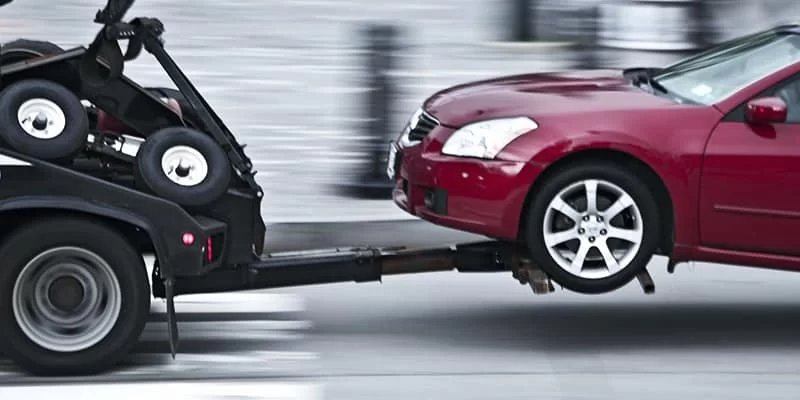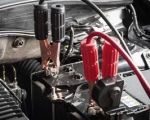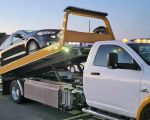When it comes to towing a vehicle, there are multiple methods available to get your car from point A to point B safely. Two of the most common types of towing are flatbed towing and wheel-lift towing. Over the years, I’ve had firsthand experience with both types, and I’ve learned how each method works, when to use them, and the advantages and disadvantages of each. If you’re unfamiliar with the differences or are unsure which towing method is right for your needs, I hope this article will shed some light on the topic and help you make an informed decision.
1. The Basics of Flatbed Towing
Flatbed towing is exactly what the name suggests—a vehicle is loaded onto a flatbed truck, which then transports the car. This type of towing is often considered the safest and most reliable method for transporting a car, especially in situations where the vehicle is damaged, disabled, or unable to be driven. I’ve used flatbed towing in several instances, including when my car was involved in an accident, and I found that it was the best way to ensure that no further damage was done to my vehicle.
The flatbed truck is equipped with a large, horizontal platform that can be lowered to the ground, allowing the car to drive (or be winched) onto the bed. Once the car is on the flatbed, it’s secured with straps or chains, ensuring it stays in place throughout the transport. Flatbed towing is often used for luxury cars, classic vehicles, or any car that might be particularly sensitive to being towed improperly.
2. The Mechanics of Wheel-Lift Towing
On the other hand, wheel-lift towing is a method where only the front (or rear) wheels of the vehicle are lifted off the ground, and the rest of the car remains on the road. This is accomplished using a lifting arm at the rear of the tow truck that can raise the vehicle’s wheels, while the remaining wheels are still in contact with the ground. I’ve seen wheel-lift towing used for a variety of situations, particularly when the car being towed is still operational, but there’s a need to transport it to a different location quickly.
Wheel-lift towing is generally quicker and more affordable than flatbed towing, but there are certain limitations. It’s not always the best option for vehicles with low clearance or for situations where the car is damaged in a way that would make contact with the ground problematic. However, in my experience, wheel-lift towing is a perfectly fine solution for everyday situations, such as getting a car to a mechanic or transporting a vehicle over a short distance.
3. When to Use Flatbed Towing
There are several key situations where flatbed towing is the preferred method, and it’s important to understand why. First, when a car is non-operational—whether due to mechanical failure or an accident—flatbed towing is usually the best choice. Since the car is completely lifted off the ground, it prevents any further damage to the vehicle’s drivetrain, tires, and suspension system.
Additionally, flatbed towing is ideal for transporting luxury or high-value cars that need extra protection. I’ve seen car enthusiasts use flatbed towing specifically for vintage vehicles or sports cars that are very low to the ground. In these cases, even a small amount of damage from the road or other towing methods could result in expensive repairs.
4. When to Use Wheel-Lift Towing
Wheel-lift towing works best in situations where speed and convenience are crucial. If you’re dealing with a simple breakdown or need to tow a vehicle that’s still operational, wheel-lift towing is a great option. This method can save time since it doesn’t require the car to be completely loaded onto a flatbed, and it’s also cheaper. I’ve used wheel-lift towing when I had a flat tire and needed to get my car to a nearby mechanic for a quick repair.
However, there are some vehicles that may not be suited for wheel-lift towing. If a vehicle has a low front or rear end, it could get damaged by scraping the ground while being towed. This is something I learned the hard way when trying to tow a lowered sports car; the wheel-lift method caused some unintended damage, so I now prefer flatbed towing for cars with low clearance.
5. The Pros and Cons of Flatbed Towing
Flatbed towing is often regarded as the safest towing method, and for good reason. One of the major advantages of flatbed towing is that it prevents any wear and tear on the towed vehicle’s tires or suspension, which is particularly important when dealing with a damaged or non-operational car. Since the entire vehicle is lifted off the ground, there’s also less chance of the car getting further damaged by the towing process. I’ve also found that flatbed towing gives me peace of mind knowing that my vehicle is completely secure and isolated from the hazards of the road.
However, there are a few downsides to flatbed towing. First, it’s more expensive than wheel-lift towing due to the extra equipment and time involved. Additionally, flatbed towing requires more space to operate, which can be a challenge if you’re in a tight or busy area. I’ve had to wait for the towing truck to get into position on a few occasions, especially in crowded city streets.
6. The Pros and Cons of Wheel-Lift Towing
Wheel-lift towing, by comparison, offers a number of advantages as well. It’s often cheaper than flatbed towing, making it a good choice for budget-conscious individuals who need to tow a working vehicle over a short distance. It’s also faster since the vehicle doesn’t need to be fully loaded onto the truck, which is why I’ve chosen wheel-lift towing in urgent situations, like when I needed to tow a car to a nearby service station.
That said, there are a few limitations with wheel-lift towing. As mentioned, it’s not ideal for low-clearance vehicles, and it may cause additional wear on the car’s drivetrain or tires if the vehicle is not in perfect condition. I’ve also noticed that wheel-lift towing can sometimes result in a less stable towing experience, especially if the vehicle being towed has an odd shape or unbalanced weight distribution.
7. Which Towing Method is Right for You?
Choosing between flatbed towing and wheel-lift towing depends on several factors, including the condition of your vehicle, your budget, and the distance the car needs to be towed. In my experience, flatbed towing is best for vehicles that are not operational, or for those that need special handling, such as sports cars or classic cars. Wheel-lift towing, on the other hand, works well for everyday situations where speed and cost are the primary considerations.
Ultimately, both methods have their place, and each one has its benefits. If you’re unsure which towing method is right for your situation, I recommend reaching out to a professional towing company like Rescue & Towing, where they can assess your needs and help you make the best decision. Their team has the experience and expertise to handle any towing situation, no matter how unique or challenging it may be.
By understanding the differences between flatbed towing and wheel-lift towing, you can make a more informed decision when it comes to transporting your vehicle. Whether you're dealing with a breakdown, an accident, or just need a vehicle moved, knowing which towing method to choose can save you both time and money.
























